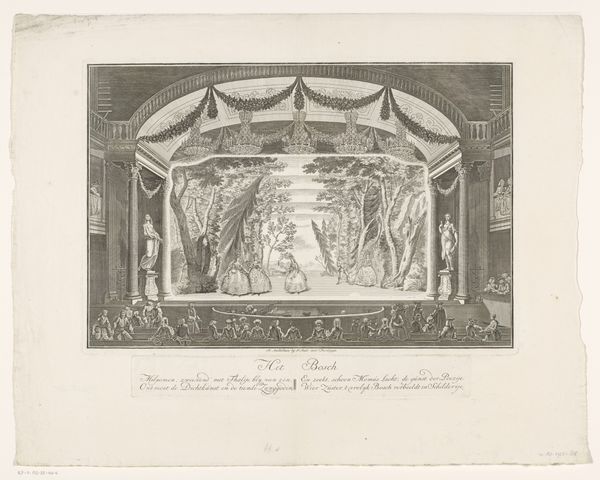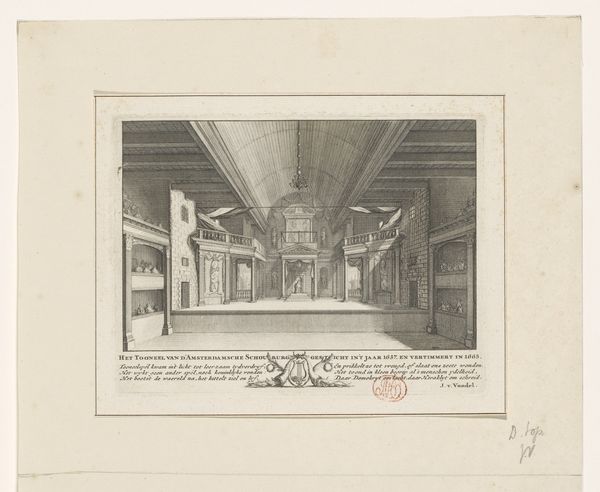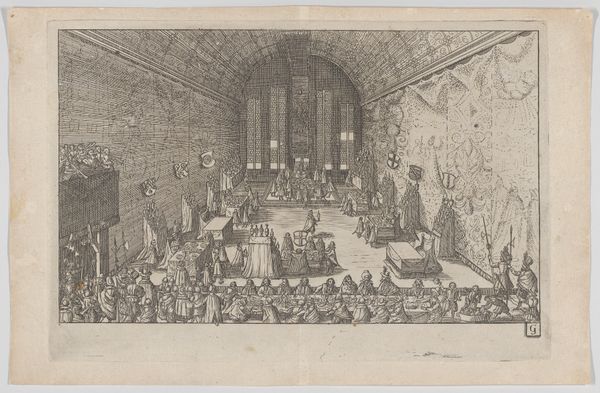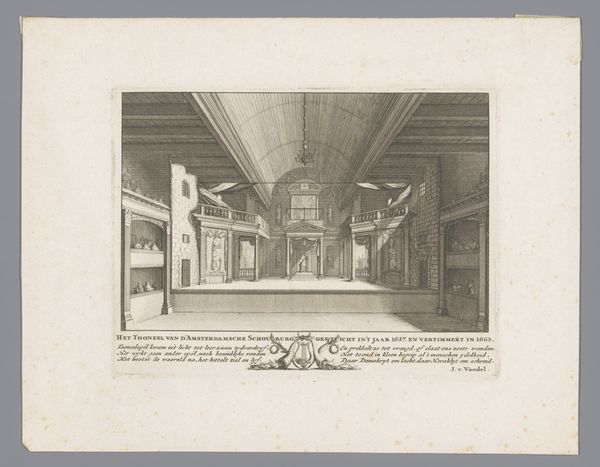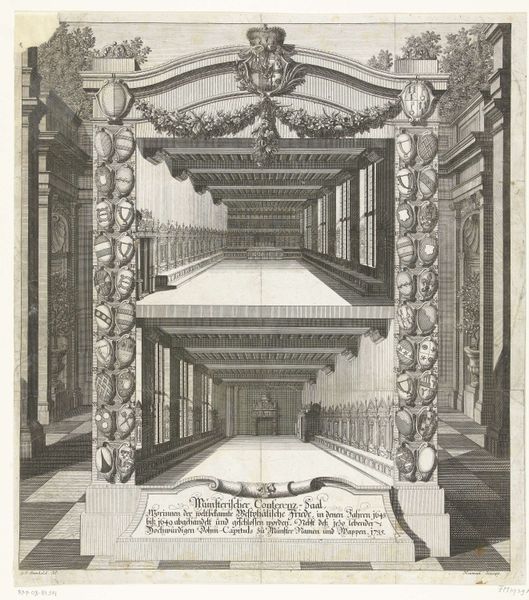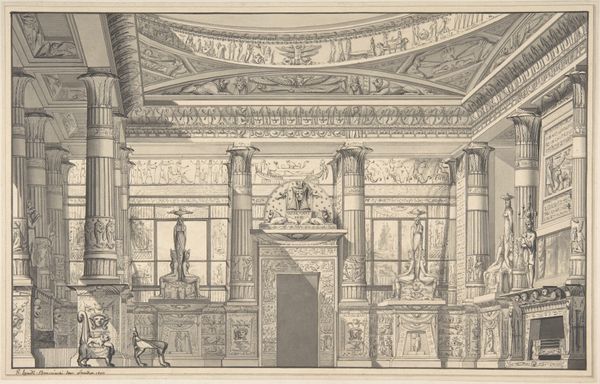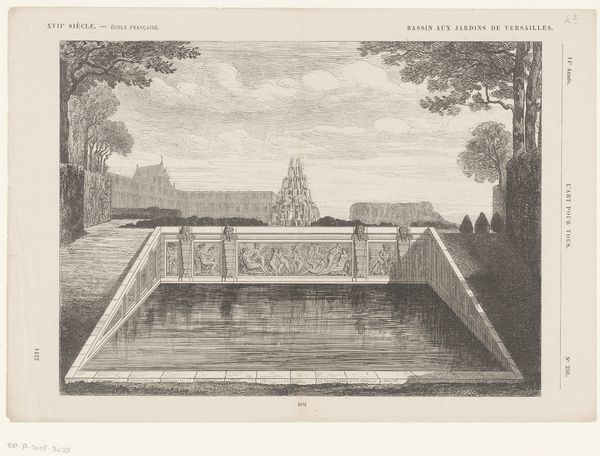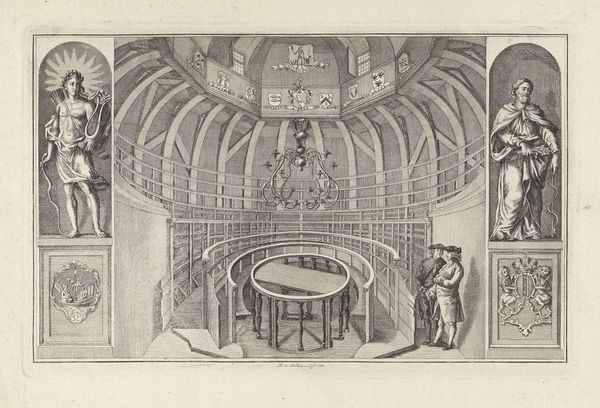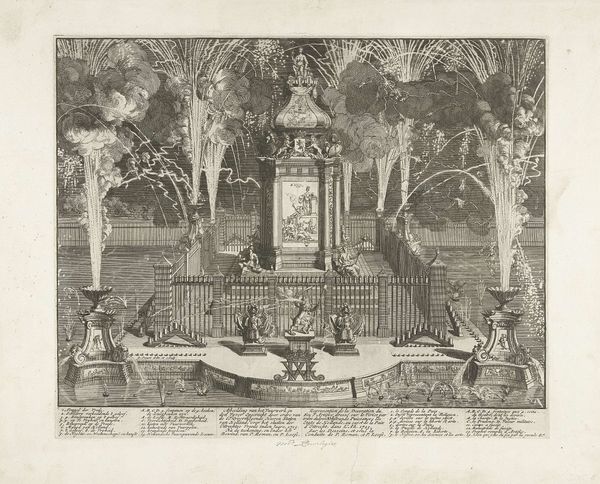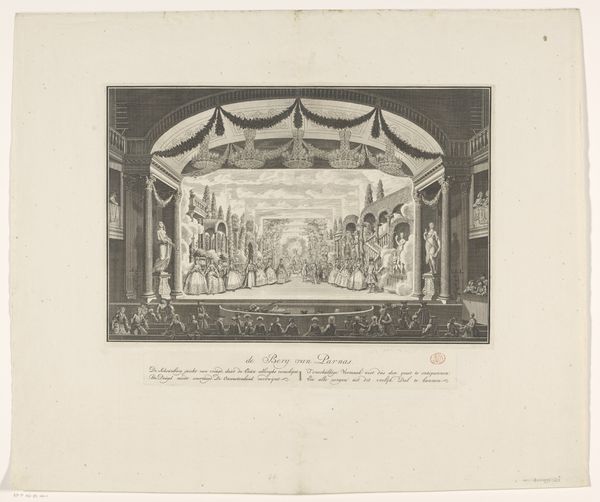
print, engraving
#
portrait
#
baroque
# print
#
history-painting
#
engraving
Dimensions: height 579 mm, width 595 mm
Copyright: Rijks Museum: Open Domain
Curator: Welcome. Before us is "Vergadering van de raadslieden van Languedoc," a print made by Bernard Picart in 1704. It's held here at the Rijksmuseum. Editor: What strikes me is the sheer repetition in the room's geometry. That rigid organization—the tiers of seated figures, the grid of the ceiling— it gives an impression of, well, regimented authority. Curator: Absolutely. The print documents an important assembly of the councilors of Languedoc, capturing the era's emphasis on hierarchical order and institutional power. It speaks volumes about the relationship between governance and representation during the reign of Louis XIV. Editor: Considering this is an engraving, one can only marvel at the texture and intricacy Picart has achieved, not just in depicting the councilors but also in suggesting the opulence of the hall. I wonder about the kind of labor and skills that would go into producing such details with the printing press, one plate at a time. Curator: Precisely. Prints such as this one served a crucial role in disseminating political imagery and constructing a visual narrative of the state, of royalty and those they selected to lead the public, and of the administrative machinery more broadly. It's propaganda, of course, carefully staged and reproduced for mass consumption. Editor: Staged yes, but with incredible sophistication in its craft. The tools and techniques used really influenced how effectively they visually communicated the subject. Those repetitive geometric elements—from the coiffed hair to the stone masonry— reinforce how regimented the society of that time had become. The way it emphasizes volume and structure! It shows its baroque styling loud and clear. Curator: Indeed. By capturing such events, Picart’s print offers a lens through which to analyze the evolving dynamics between the state, the public, and the visual language that bound them. Editor: It makes you consider who was even allowed at the table, so to speak, and all the labor and resources that literally and figuratively propped up the room. The more you see the layers, the less you see those seated here! Curator: A fitting perspective for appreciating not just the artistry, but the artifice of power. Editor: And what went into making it.
Comments
No comments
Be the first to comment and join the conversation on the ultimate creative platform.
